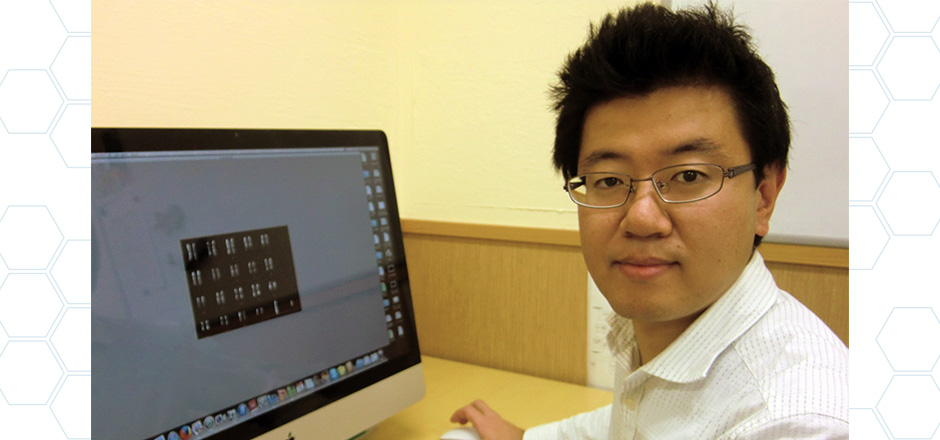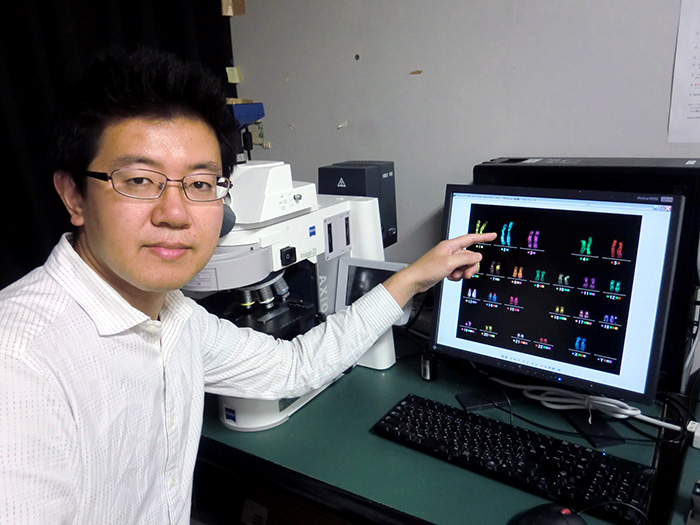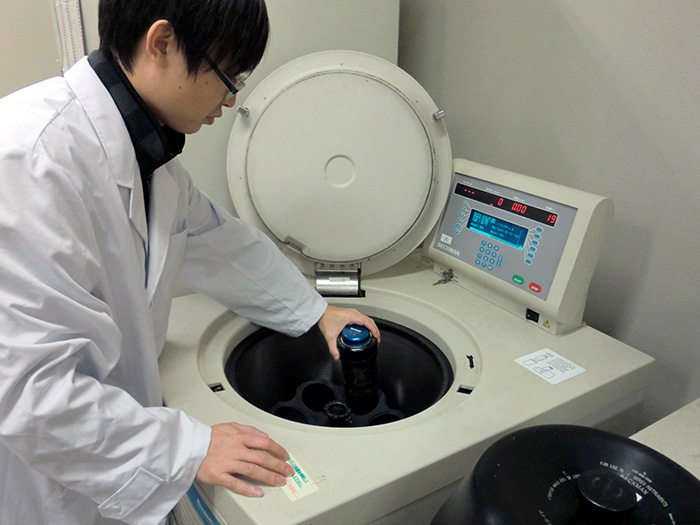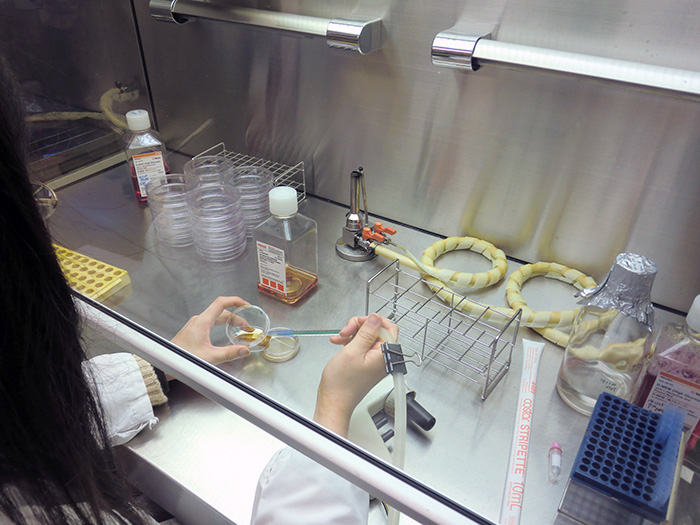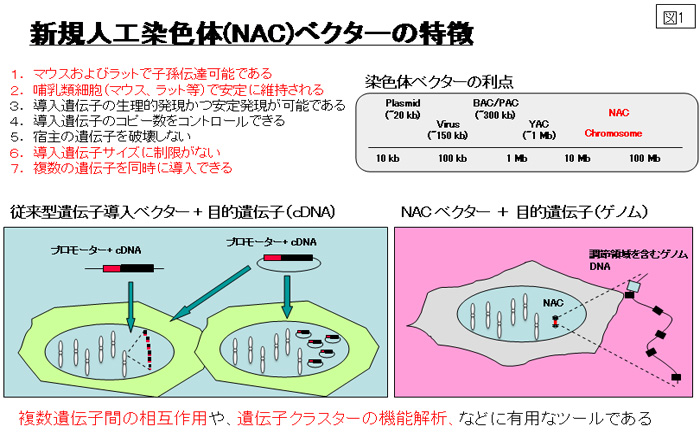Research and Development Projects Adopted in FY2014
Generation of transchromosomic rats that express human antibodies via chromosome engineering technology
Project Leader:Kazuki Yasuhiro
Associate Professor, Chromosome Engineering Reserch Center, Tottori University
Monoclonal antibody production using transgenic mice expressing the human immunoglobulin (Ig) gene has become the standard technique for the screening of candidate antibodies for medical use.
However, the requirements for the production of functional antibodies and antibodies against specific antigens are increasingly difficult to achieve.
Thus, increased technological advances in transgenic mice, some of which have already been generated, are expected to improve antibody production.
In 1997, we succeeded in generating the first mouse to contain the full-length human Ig loci, in which the fully human antibody was produced, via transchromosomic (Tc) technology.
However, the stability of the human artificial chromosome (HAC) with a centromere sequence derived from normal human cells was not perfect in mice.
Stabilization of the introduced human Ig genes in mice may improve the quality of the humanized mice.
Previously, we succeeded in generating a NAC (novel artificial chromosome) vector to overcome the stability problem present for HAC.
NAC vectors have the following characteristics:
(i) there are no known endogenous genes remaining in the NAC and the desired genes can be loaded directly into the NAC;
(ii) it is present episomally in host cells, thus it is independent of the host chromosomes and is germline transmittable in mice and rats;
(iii) it is mitotically stable both in vitro and in vivo in mammalian cells including mouse and rat cells;
and (iv) it has the unlimited capacity to carry large and multiple genomic loci with their regulatory elements.
Thus, gene delivery using the NAC vector is a unique and useful approach compared to conventional techniques such as knock out (KO), knock in (KI) and Transgenic (Tg) technologies.
Furthermore, if the Tc technology using NAC vectors can be applied to the production of fully humanized antibodies using non-mouse rodents, it is expected to be a breakthrough platform technology to obtain desired antibodies against higher numbers of antigens with a higher probability than using the currently available methods.
In this study, we will generate rats expressing fully human antibodies by transferring the human Ig heavy and light chains (κ and λ) using the NAC vector and by knocking out the endogenous rat Ig genes.
We will generate monoclonal antibodies by the hybridoma method using the fully humanized Ig rat and evaluate their specificity.
Additionally, we will develop this novel technology for the expansion of antibody specificities by modifying the human Ig genome in the rat.
This study will be performed by the staff and project researchers of the Chromosome Engineering Research Center at Tottori University in cooperation with staff from the Research Center for Bioscience.
This study will be useful for the establishment of a basic technology to obtain safe human antibodies with enhanced functionality.
Furthermore, it will have an impact on the development of next generation biomedicine and contribute to the promotion of life innovation.
<Figure1>
This picture shows the image of multicolor FISH (mFISH) analysis.
mFISH analyses are performed using fixed metaphase spreads of cultured cells.
Then, chromosomal abnormalities are identified and genes on the artificial chromosome are mapped via using mFISH software program.
<Figure2>
This picture shows the process of centrifugation of culture flasks in microcell-mediated chromosome transfer (MMCT) methods.
For chromosome transfer, flasks containing cultured donor CHO cells are set into the centrifuge, and the microcells are enucleated from the cells. Finally, the microcells are fused with recipient cells.
<Figure3>
This picture shows the process of cell culture.
For the cloning of human Ig genes into an artificial chromosome, donor CHO cells are cultured and grown.
<Figure4>
This figure shows characteristics of a novel artificial chromosome (NAC). Large and multiple genes which cannot be transferred via conventional vectors will be delivered.
